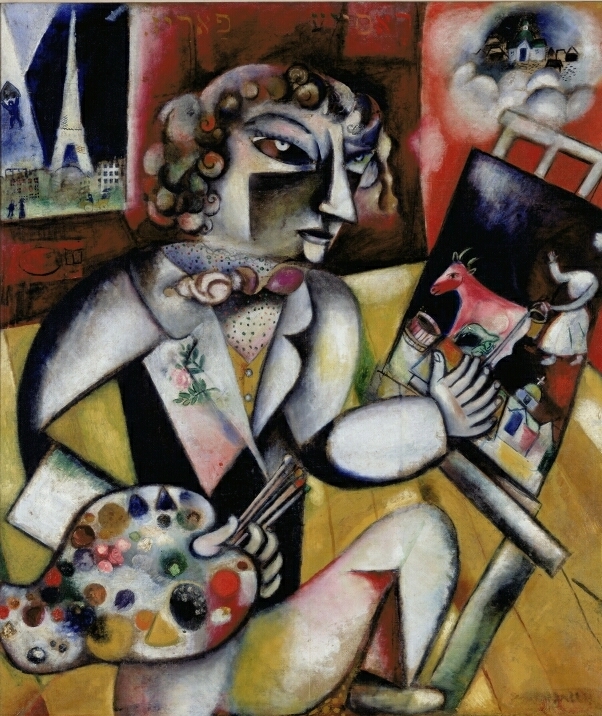On view
L'autoportrait aux sept doigts
Marc Chagall
Marc Chagall's Self-Portrait with Seven Fingers is not a naturalistic image, yet it describes a great deal about himself as a person and as an artist. The work is dated 1912-1913, shortly after he moved to Paris from Russia. His Parisian location is identifiable because the Eiffel Tower is visible through the window. In contrast to his geographic location, he paints rural images, like a milkmaid and cow. His hometown, Vitebsk, is depicted in a cloud above his head. While he is in France, his thoughts and paintings remained centred on Russia. Formally, Cubist influences can be seen in the broken down planes that make up the artist's face. Chagall further depicts himself in this colourfull painting as caught between two worlds by writing 'Paris' and 'Russia' in Hebrew letters on the top of the canvas. Chagall's left hand has seven fingers and the number seven is meaningful to Chagall, as he was born on the 7th day of the 7th month in 1887.

Makers
Translated title
Self-Portrait with Seven Fingers
Collection
Production date
1912-1913
Library
Click here to view 73 related documents
Dimensions
135.5 x 117 x 6cm.
Material
oil on canvas
Object number
B 2167
Credits
bruikleen Rijksdienst voor het Cultureel Erfgoed / on loan from the Cultural Heritage Agency of the Netherlands gerestaureerd met financiële steun van de deelnemers van de VriendenLoterij / restored with the generous support of the participants of the VriendenLoterij




















